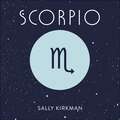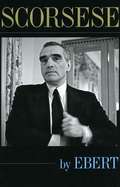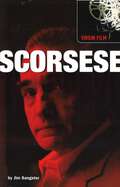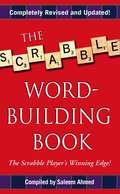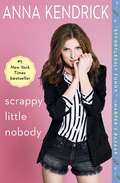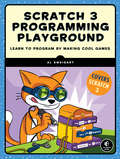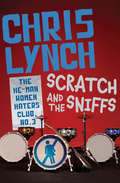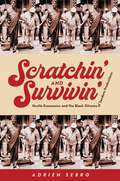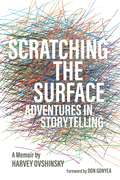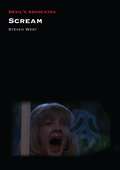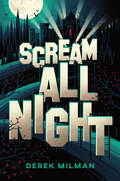- Table View
- List View
Scorpio: The Art of Living Well and Finding Happiness According to Your Star Sign
by Sally KirkmanYou are a Scorpio. You are the change agent and healer of the zodiac.The signs of the zodiac can give us great insight into our day-to-day living as well as the many talents and qualities we possess. But in an increasingly unpredictable world, how can we make sense of them? And what do they mean? This insightful and introductory guide delves deep into your star sign, revealing unique traits and meanings which you didn't know. Along the way, you will discover how your sign defies your compatibility, how to improve your health and what your gifts are. ***The Pocket Astrology series will teach you how to live well and enhance every aspect of your life. From friendship to compatibility, careers to finance, you will discover new elements to your sign and learn about the ancient art of astrology. Other audiobooks in the series include: Aries, Taurus, Gemini, Cancer, Leo, Virgo, Libra, Scorpio, Sagittarius,Capricorn, Aquarius, Pisces(P)2018 Hodder & Stoughton Limited
Scorsese by Ebert
by Roger EbertRoger Ebert wrote the first film review that director Martin Scorsese ever received -- for 1967's "I Call First" -- when both men were just embarking on their careers. Ebert had never been touched by a movie in quite the same way before, and this experience created a lasting bond that made him one of Scorsese's most appreciative and perceptive commentators. "Scorsese by Ebert" offers the first record of America's most respected film critic's engagement with the works of America's greatest living director. The book chronicles every single feature film in Scorsese's considerable oeuvre, from his aforementioned debut to his 2008 release, the Rolling Stones documentary, "Shine a Light". Here Ebert puts Scorsese's career in illuminating perspective, exploring the different phases of his development and the abiding themes (many of which reflect Scorsese's Catholicism) that give his work such complexity and depth. All of Ebert's incisive reviews of Scorsese's individual films are here, of course, but there is much more. In the course of eleven interviews done over almost forty years, the book includes Scorsese's own insights on both his accomplishments and disappointments. One of these interviews, the single longest ever conducted with Scorsese, appears here for the first time. Ebert has also written and included six new re-considerations of the director's less commented upon films, as well as a substantial introduction that provides a framework for understanding both Scorsese and his profound impact on American cinema. As Scorsese himself notes in his foreword to this volume, history is the only critic that counts, but the dialogue from which its judgments arise begins with the kind of emotionally alert, historically informed, and intellectually honest writing that Ebert has collected here in this, the ideal pairing of filmmaker and critic.
Scorsese: Virgin Film
by Jim SangsterMartin Scorsese’s obsession with sin and redemption, conflict and violence runs through much of his work. This essential guide to Scorsese explores his career from his early student works, including It’s Not Just You, Murray!: through his personal examinations of his Italian American heritage in Mean Streets, Italianamerican and Goodfellas: the extreme violence of Raging Bull, Taxi Driver and Cape Fear: and the religious themes – from a director who originally wanted to be a priest – of The Last Temptation of Christ and Kundun. Including all Scorsese’s films up to Gangs of New York, this is a comprehensive study of the work of this widely respected film maker. Also covering his influences, the controversy surrounding his films, exhaustive music lists and long-time collaborations, this is an extensive analysis of the most consistently passionate, committed and inventive film director of the last thirty years.
Scrabble Word-Building Book
by Saleem AhmedWant to outsmart, outwit, and outplay your Scrabble® opponents? Using the completely revised and updated The Scrabble® Word-Building Book, you can! This essential strategy guide shows you how to build on your opponents' words and become a master of this classic game. For novice players and expert wordsmiths alike, this helpful reference includes: A handy list of the 94 two-letter words sure to pile on the points Over 800 three-letter words -- 550 of which can be formed from two-letter words All eight-letter words that can be formed from seven-letter words Every word up to seven letters you can play! To increase your word-building power and achieve the highest score, keep The Scrabble® Word-Building Book at your fingertips -- and beat your opponent every time!
Scrappy Little Nobody
by Anna Kendrick<P>A collection of humorous autobiographical essays by the Academy Award-nominated actress and star of Up in the Air and Pitch Perfect. <P>Even before she made a name for herself on the silver screen starring in films like Pitch Perfect, Up in the Air, Twilight, and Into the Woods, Anna Kendrick was unusually small, weird, and "10 percent defiant." <P> At the ripe age of thirteen, she had already resolved to "keep the crazy inside my head where it belonged. Forever. But here's the thing about crazy: It. Wants. Out." <P>In Scrappy Little Nobody, she invites readers inside her brain, sharing extraordinary and charmingly ordinary stories with candor and winningly wry observations. With her razor-sharp wit, Anna recounts the absurdities she's experienced on her way to and from the heart of pop culture as only she can--from her unusual path to the performing arts (Vanilla Ice and baggy neon pants may have played a role) to her double life as a middle-school student who also starred on Broadway to her initial "dating experiments" (including only liking boys who didn't like her back) to reviewing a binder full of butt doubles to her struggle to live like an adult woman instead of a perpetual "man-child." <P>Enter Anna's world and follow her rise from "scrappy little nobody" to somebody who dazzles on the stage, the screen, and now the page--with an electric, singular voice, at once familiar and surprising, sharp and sweet, funny and serious (well, not that serious). <P><b>A New York Times Bestseller</b>
Scratch 3 Programming Playground: Learn to Program by Making Cool Games
by Al SweigartA project-filled introduction to coding that shows kids how to build programs by making cool games. Scratch, the colorful drag-and-drop programming language, is used by millions of first-time learners worldwide. Scratch 3 features an updated interface, new programming blocks, and the ability to run on tablets and smartphones, so you can learn how to code on the go.In Scratch 3 Programming Playground, you'll learn to code by making cool games. Get ready to destroy asteroids, shoot hoops, and slice and dice fruit! Each game includes easy-to-follow instructions with full-color images, review questions, and creative coding challenges to make the game your own. Want to add more levels or a cheat code? No problem, just write some code.You'll learn to make games like: • Maze Runner: escape the maze! • Snaaaaaake: gobble apples and avoid your own tail • Asteroid Breaker: smash space rocks • Fruit Slicer: a Fruit Ninja clone • Brick Breaker: a remake of Breakout, the brick-breaking classic • Platformer: a game inspired by Super Mario BrosLearning how to program shouldn't be dry and dreary. With Scratch 3 Programming Playground, you'll make a game of it!Covers: Scratch 3
Scratch and the Sniffs (The He-Man Women Haters Club #3)
by Chris LynchThe He-Man Women Haters are rocking out in a punk band!With Wolfgang newly installed as their leader, the He-Men recruit club members Scratch and Cecil, and form a garage punk band. In no time at all, Scratch and the Sniffs is born—the problem is, no one can actually play an instrument. But lack of talent doesn&’t stop the He-Man Women Haters Club from chasing stardom—or at least a few bucks!
Scratchin' and Survivin': Hustle Economics and the Black Sitcoms of Tandem Productions
by Adrien SebroThe 1970s was a golden age for representations of African American life on TV sitcoms: Sanford & Son, Good Times, The Jeffersons. Surprisingly, nearly all the decade’s notable Black sitcoms were made by a single company, Tandem Productions. Founded by two white men, the successful team behind All in the Family, writer Norman Lear and director Bud Yorkin, Tandem gave unprecedented opportunities to Black actors, writers, and producers to break into the television industry. However, these Black auteurs also struggled to get the economic privileges and creative autonomy regularly granted to their white counterparts. Scratchin’ and Survivin’ discovers surprising parallels between the behind-the-scenes drama at Tandem and the plotlines that aired on their sitcoms, as both real and fictional African Americans devised various strategies for getting their fair share out of systems prone to exploiting their labor. The media scholar Adrien Sebro describes these tactics as a form of “hustle economics,” and he pays special attention to the ways that Black women—including actresses like LaWanda Page, Isabel Sanford, and Esther Rolle—had to hustle for recognition. Exploring Tandem’s complex legacy, including its hit racially mixed sitcom Diff’rent Strokes, he showcases the Black talent whose creative agency and labor resilience helped to transform the television industry.
Scratching the Surface: Adventures in Storytelling (Painted Turtle)
by Harvey OvshinskyScratching the Surface: Adventures in Storytelling is a deeply personal and intimate memoir told through the lens of Harvey Ovshinsky’s lifetime of adventures as an urban enthusiast. He was only seventeen when he started The Fifth Estate, one of the country’s oldest underground newspapers. Five years later, he became one of the country’s youngest news directors in commercial radio at WABX-FM, Detroit’s notorious progressive rock station. Both jobs placed Ovshinsky directly in the bullseye of the nation’s tumultuous counterculture of the 1960s and 70s. When he became a documentary director, Ovshinsky’s dispatches from his hometown were awarded broadcasting’s highest honors, including a national Emmy, a Peabody, and the American Film Institute’s Robert M. Bennett Award for Excellence. But this memoir is more than a boastful trip down memory lane. It also doubles as a survival guide and an instruction manual that speaks not only to the nature of and need for storytelling but also and equally important, the pivotal role the twin powers of endurance and resilience play in the creative process. You don’t have to be a writer, an artist, or even especially creative to take the plunge, Ovshinsky reminds his readers. "You just have to feel strongly about something or have something you need to get off your chest. And then find the courage to scratch your own surface and share your good stuff with others." Above all, Ovshinsky is an educator, known for his passionate support of and commitment to mentoring the next generation of urban storytellers. When he wasn’t teaching screenwriting and documentary production in his popular workshops and support groups, he taught undergraduate and graduate students at Detroit’s College for Creative Studies, Wayne State University, Madonna University, and Washtenaw Community College. "The thing about Harvey," a colleague recalls in Scratching the Surface, "is that he treats his students like professionals and not like newbies at all. His approach is to, in a very supportive and non-threatening way, combine both introductory and advanced storytelling in one fell swoop."
Scream (Devil's Advocates)
by Steven WestWes Craven's Scream (1996) emerged at the point where the early eighties American slasher cycle had effectively morphed into the post-Fatal Attraction trend for Hollywood thrillers that incorporated key slasher movie tropes. Scream emerged as a spiritual successor to Wes Craven's unpopular but critically praised previous film New Nightmare (1994), which evolved from his frustration at having lost creative control over his most popular creation, Freddy Krueger, and rebirthed the character in a postmodern context. Scream appropriates many of the concepts, conceits, and in-jokes inherent in New Nightmare, albeit in a much more commercial context that did not alienate teenage audiences who were not around to see the movies that were being referenced. This Devil's Advocate offers a full exploration of Scream, including its structure, its many reference points (such as the prominent use of Halloween as a kind of sacred text), its marketing ("the new thriller from Wes Craven" – not a horror film), and legacy for horror cinema in the new millennium.
Scream All Night
by Derek MilmanA darkly hilarious contemporary realistic young adult novel about growing up and finding your place in the world, perfect for fans of Me and Earl and the Dying Girl and Running With Scissors. Goodreads The Hottest YA Books of Summer * B&N Teen Blog Most Anticipated YA Debuts of 2018 * Buzzfeed 27 YA Books You’ll Want to Devour By the Pool This Summer *DARIO HEYWARD KNOWS ONE THING: He’s never going back to Moldavia Studios, the iconic castle that served as the set, studio, and home to the cast and crew of dozens of cult classic B-horror movies. It’s been three years since Dario’s even seen the place, after getting legally emancipated from his father, the infamous director of Moldavia’s creature features.But then Dario’s brother invites him home to a mysterious ceremony involving his father and a tribute to his first film—The Curse of the Mummy’s Tongue. Dario swears his homecoming will be a one-time visit. A way for him to get closure on his past—and reunite with Hayley, his first love and costar of Zombie Children of the Harvest Sun, a production fraught with real-life tragedy—and say good-bye for good. But the unthinkable happens—Dario gets sucked back into the twisted world of Moldavia and the horrors, both real and imagined, he’s left there.With only months to rescue the sinking studio and everyone who has built their lives there, Dario must confront the demons of his past—and the uncertainties of his future. But can he escape the place that’s haunted him his whole life?
Scream Deconstructed: An Unauthorized Analysis
by Scott KessingerSomeone's taken their love of Scream one step too far. . . and written a book about it! Having earned the respect and accolades of critics and audiences, generated more than half a billion dollars in revenue, and inspired a gaggle of imitators, it's safe to say Scream is millions of people's favorite scary movie. While the Scream films have scared and entertained moviegoers worldwide, they've also invited us to closer examine the movies we watch: to deconstruct them. This book aims to do just that. Scream Deconstructed: An Unauthorized Analysis puts all four Scream movies under the knife to examine the meaning, themes and philosophy of the movie series that brought horror back from the dead by breaking all the rules. Take a close look into the heart of this pop culture phenomenon and what its characters - including Sidney, Gale, Dewey, and each film's killer - represent. Find out what reality, film, fantasy, and sex have to do with it all. Scream Deconstructed is sure to please any fan of Scream, horror, or film in general.
Scream Queen: A memoir
by Yvette FieldingSeances, Ouija boards, table tipping, knocking phenomena - all in a day's work for the First Lady of the Paranormal. Yvette Fielding has nerves of steel when facing down her tormentors in the spirit world. Her living-world personal story also reveals a woman of courage and determination, who built success from nothing, following her passion and lifelong curiosity in search of answers to the unexplained.Yvette was always fascinated with the afterlife, and Buddhist meditation practice opened her up to any spirit who wanted to contact her. This manifested in her first family home. Their TV would switch itself on, and kitchen cupboards would open and close all by themselves. When alone there, Yvette would arm herself with a Samurai sword to confront her unseen visitors.But it was a harrowing investigation of eerie 800 year-old Michelham Priory where Yvette’s life-changing Most Haunted adventure began, and still continues many terrifying quests and over twenty years later.Here you’ll walk with Yvette where others fear to tread through chills of the supernatural kind, and she also talks with candid honesty of occasional cold spots she’s encountered in human form. But through all the drops in temperature, the nation’s most celebrated ghost hunter radiates warmth and humour and it’s a joy to accompany her on her incredible journey from child TV star to Most Haunted icon.Beware sceptics: the Scream Queen's story could change your world view for ever.
Scream with Me: Horror Films and the Rise of American Feminism (1968-1980)
by Eleanor JohnsonA LOS ANGELES TIMES MOST ANTICIPATED BOOK OF 2025 A compelling, intelligent, and timely exploration of the horror genre from one of Columbia University&’s most popular professors, shedding light on how classic horror films demonstrate larger cultural attitudes about women&’s rights, bodily autonomy, and more.In May of 2022, Columbia University&’s Dr. Eleanor Johnson watched along with her students as the Supreme Court reversed Roe v. Wade. At the same time, her class was studying the 1968 horror film Rosemary&’s Baby and Johnson had a sudden epiphany: horror cinema engages directly with the combustive politics of women&’s rights and offer a light through the darkness and an outlet to scream. With a voice as persuasive as it is insightful, Johnson reveals how classics like Rosemary&’s Baby, The Exorcist, and The Shining expose and critique issues of reproductive control, domestic violence, and patriarchal oppression. Scream with Me weaves these iconic films into the fabric of American feminism, revealing that true horror often lies not in the supernatural, but in the familiar confines of the home, exposing the deep-seated fears and realities of women&’s lives. While on the one hand a joyful celebration of seminal and beloved horror films, Scream with Me is also an unflinching and timely recognition of the power of this genre to shape and reflect cultural dialogues about gender and power.
Screams & Nightmares: The Films of Wes Craven
by Brian J. RobbWriter, producer, and director Wes Craven has successfully tapped into the horror vein for over forty years, serving up scary, funny, cutting-edge thrillers that have become classics in the genre. His films have been both critical and commercial successes, most notably Nightmare on Elm Street, which spawned a series of sequels and made Craven (and his creation, Freddy Kruger) an international sensation. He then created a second indelible series in the horror movie trope with Scream. In Screams & Nightmares, Brian J. Robb examines Craven's entire career, from his low-budget beginnings to his most recent box office hits, from the banned thriller The Last House on the Left and the cult classic The Hills Have Eyes to the outrageous Shocker and The People Under the Stairs. Through exclusive interviews with Craven, Robb provides in-depth accounts of the making of each of the films – including the final installments of the Scream series – Craven's foray into writing novels, and his numerous television projects.
Screen Adaptation: A Scriptwriting Handbook
by Kenneth PortnoyScreen Adaptation : A Scriptwriting Handbook, 2nd ed. examines the challenge screenwriters face when adapting novels, plays, and short stories for the screen. Thoroughly updated to include new exercises and example from current films, this book provides practical, usable information on how to find the best plot line for a script, choose key characters, and understand the goals and formats of different genres. Topics include: determining which characters and events are most valuable on developing the main story;expanding short novellas and condensing long novels;using dialog to advance the story and reveal character;comparing the formats of plays, short stories, and novels to those of screenplaysapproaching the marketplaceIn this book, both beginning writers and professionals will find the tools necessary to evaluate a prospective source and create a successful screenplay
Screen Adaptation: Techniques for Adapting Books, Comics and Real-Life Stories into Screenplays
by Eric R. WilliamsOnce you understand the basics of screenwriting, ideas for your next screenplay are everywhere. Whether it comes from a favorite children’s book, a summer novel you discover accidentally, a news story that catches your imagination, or a chapter from your own life — advanced screenwriting strategies should now guide you through your first adaptation. In Screen Adaptation: Beyond the Basics, award-winning screenwriter Eric Williams uses examples from award-winning screenplays to explain new storytelling techniques. His real-world examples illustrate a range of advanced approaches — including new ways to identify and craft tension, how to reimagine structure and character, and how to strengthen emotional depth in your characters and in the audience. Screen Adaptation: Beyond the Basics teaches readers new ways to engage with source material in order to make successful adaptation decisions, regardless of the source material. The book offers: Three detailed examples of award-winning adaptations by the author, including the complete short story and final scripts used in the Voices From the Heartland project; Breakout boxes highlighting modern and historical adaptations and providing examples for each concept discussed in the book; More than fifty charts providing easy-to-use visual representations of complex concepts; New screenwriting techniques developed by the author, including the Triangle of Knowledge, the Storyteller’s Parallax, and the idea of Super Genres as part of a Screenwriters Taxonomy.
Screen Comedy and Online Audiences (Routledge Research in Cultural and Media Studies)
by Inger-Lise Kalviknes BoreThe question of why we laugh (or don't laugh) has intrigued scholars since antiquity. This book contributes to that debate by exploring how we evaluate screen comedy. What kinds of criteria do we use to judge films and TV shows that are meant to be funny? And what might that have to do with our social and cultural backgrounds, or with wider cultural ideas about film, TV, comedy, quality and entertainment? The book examines these questions through a study of audience responses posted to online facilities such as Twitter, Facebook, review sites, blogs and message boards. Bore’s analysis of these responses considers a broad range of issues, including how audiences perceive the idea of "national" comedy; what they think of female comedians; how they evaluate romcoms, sitcoms and web comedy; what they think is acceptable to joke about; what comedy fans get excited about; how fans interact with star comedians; and what comedy viewers really despise. The book demonstrates some of the ways in which we can adapt theories of humour and comedy to examine the practices of contemporary screen audiences, while offering new insights into how they negotiate the opportunities and constrictions of different online facilities to share their views and experiences.
Screen Couple Chemistry
by Martha P. NochimsonAstaire and Rogers, Tracy and Hepburn. Just the mention of their names evokes the powerful chemistry between these screen couples, which utterly transcended the often formulaic films in which they appeared together. Indeed, watching the synergistic flow of energy between charismatic screen partners is one of the great pleasures of cinema and television, as well as an important vehicle for thinking through issues of intimacy and gender relations. In this book, Martha P. Nochimson engages in a groundbreaking study of screen couple chemistry. She begins by classifying various types of couples to define what sets the synergistic couple apart from other onscreen pairings. Then she moves into extended discussions of four enduring screen couples-Maureen O'Sullivan/Johnny Weissmuller, Myrna Loy/William Powell, Fred Astaire/Ginger Rogers, and Katharine Hepburn/Spencer Tracy. Using theories of neuroscience, she demonstrates that their onscreen chemistry is a very real phenomenon, powerful enough to subvert conventional formulations of male/female relations. Material she has uncovered in the infamous Production Code Administration files illuminates the historical context of her contentions. Finally, Nochimson traces the screen couple to its present-day incarnation in such pairs as Woody Allen/Diane Keaton, Scully/Mulder of The X-Files, and Cliff/Claire Huxtable of The Cosby Show.
Screen Culture and the Social Question, 1880–1914 (KINtop #3)
by Ludwig Vogl-Bienek and Richard CrangleEssays exploring how reformers and charities used the “magic lantern” to raise public awareness of poverty.Public performances using the magic or optical lantern became a prominent part of the social fabric of the late nineteenth century. Drawing on a rich variety of primary sources, Screen Culture and the Social Question, 1880-1914 investigates how the magic lantern and cinematograph, used at public lectures, church services, and electoral campaigns, became agents of social change.The essays examine how social reformers and charitable organizations used the “art of projection” to raise public awareness of the living conditions of the poor and the destitute, as they argued for reform and encouraged audiences to work to better their lot and that of others.
Screen Distribution and the New King Kongs of the Online World
by Stuart Cunningham Jon SilverDrawing on comparisons with historical shake-ups in the film industry, Screen Distribution Post-Hollywood offers a timely account of the changes brought about in global online distribution of film and television by major new players such as Google/YouTube, Apple, Amazon, Yahoo , Facebook, Netflix and Hulu.
Screen Hustles, Grifts and Stings: Stings, Grifts, Hustles and the Long Con
by A. SargeantScreen Hustles, Grifts and Stings identifies recurrent themes and techniques of the con film, suggests precedents in literature and discusses the perennial appeal of the con man for readers and viewers alike. Core studies span from film (Catch Me If You Can, Paper Moon, House of Games) to television (Hustle), from Noir (The Grifters) to Romantic Comedy (Gambit). Frequently, the execution of the con is only finely distinguishable from the conduct of a legitimate profession and, challengingly, a mark is often shown to be culpable in his or her undoing. The best con films, it is suggested, invite re-watching and reward the viewer accordingly: who is complicit and when? How and where is the con achieved? When is the viewer party to the con? And what, if any, moral is to be drawn?
Screen Media: Analysing Film and Television
by Jane Stadler Kelly McWilliamScreen Media offers screen enthusiasts the analytical and theoretical vocabulary required to articulate responses to film and television. The authors emphasise the importance of 'thinking on both sides of the screen'. They show how to develop the skills to understand and analyse how and why a screen text was shot, scored, and edited in a particular way, and then to consider what impact those production choices might have on the audience.Stadler and McWilliam set production techniques and approaches to screen analysis in historical context. They demystify technological developments and explain the implications of increasing convergence of film and television technologies. They also discuss aesthetics, narrative, realism, genre, celebrity, cult media and global screen culture. Throughout they highlight the links between screen theory and creative practice.With extensive international examples, Screen Media is an ideal introduction to critical engagement with film and television.'Screen Media offers a systematic approach to film and television analysis. The examples chosen by the authors are both appropriate and timely, and are presented in a very lively and readable form that will appeal to an international readership.' - Rebecca L. Abbott, Professor of Film, Video + Interactive Media, Quinnipiac University, USA
Screen Nazis
by Sabine HakeFrom the late 1930s to the early twenty-first century, European and American filmmakers have displayed an enduring fascination with Nazi leaders, rituals, and symbols, making scores of films from Confessions of a Nazi Spy (1939) and Watch on the Rhine (1943) through Des Teufels Gentral (The Devil's General, 1955) and Pasqualino settebellezze (Seven Beauties, 1975) up to Der Untergang (Downfall, 2004), Inglourious Basterds (2009), and beyond.
Screen Plays: How 25 Scripts Made It to a Theater Near You--for Better or Worse
by David S. CohenIn this fascinating survey of contemporary screen craft, David Cohen of Script and Variety magazines leads readers down the long and harrowing road every screenplay takes from idea to script to screen. In interviews with Hollywood screenwriters from across the board-Oscar winners and novices alike-Cohen explores what sets apart the blockbuster successes from the downright disasters. Tracing the fortunes of twenty-five films, including Troy, Erin Brockovich, Lost in Translation, and The Aviator, Cohen offers insider access to back lots and boardrooms, to studio heads, directors, and to the over-caffeinated screenwriters themselves. As the story of each film evolves from the drawing board to the big screen, Cohen proves that how a script is written, sold, developed, and filmed can be just as dramatic and intriguing as the movie itself-especially when the resulting movie is a fiasco. Covering films of all kinds-from tongue-in-cheek romps like John Waters's A Dirty Shame to Oscar winners like Monster's Ball and The Hours-Screen Plays is an anecdote-filled, often inspiring, always revealing look at the alchemy of the movie business. With Cohen as your expert guide, Screen Plays exposes how and why certain films (such as Gladiator) become "tent poles," those runaway successes every studio needs to survive, and others become train wrecks. Full of critical clues on how to sell a script-and avoid seeing it destroyed before the director calls Action!-it's the one book every aspiring screenwriter will find irresistible.
